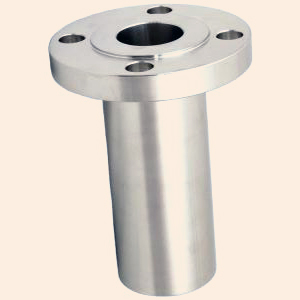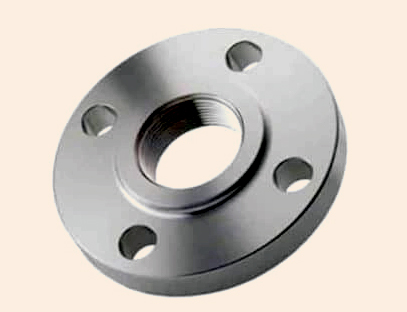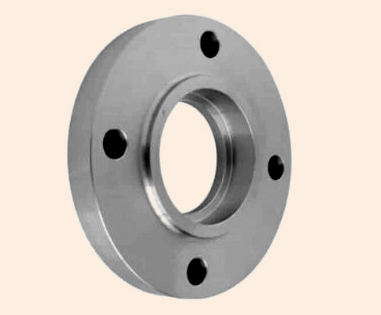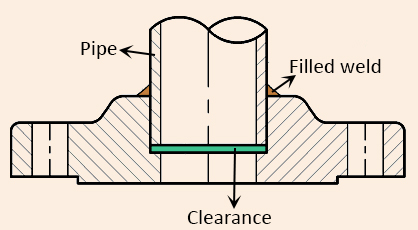Flanges are used as a tool to connect pipes and equipment together in industry. Although there are other joining methods, such as welding and thread, flanges are necessary for high pressure or large size applications, which need probable joint dismantling. Almost all refinery and petrochemical equipment uses flanges for its nozzles. As various types of flanges are available in oil and gas industry, engineers have to be familiar with typical flange types. In the following section, we will introduce common flange types in oil and gas industry.
Flange types
Flanges are consist of three main components: flanges, gasket and bolts. ASME (American Society of Mechanical Engineers) B16.5 covers pressure-temperature rating, material, dimensions and testing for pipe flanges and flanged fittings. Apart from connection type, a flange can be classified based on its facing as flat, raised and RTJ. Ring type joint (RTJ) flanges have a groove in which the gasket seats. Therefore, they are suitable for high pressure and temperature services. Flange’s facing can also have a serrated finish. Faces with smooth finish are mostly require metal gasket.
Weld neck
Weld neck flanges (WN) are the most common flange type for process piping. They are capable for operating at high pressure or near vacuum conditions. They can be used in wide range of temperatures without any difficulty. The tapered hub at the end of flange helps to provide a uniform distribution of mechanical stress, thus increasing the stability. They are welded to a pipe or fitting with a simple Butt-weld. Weld neck flanges are relatively expensive.


Long weld neck
Long weld neck flanges (LWN), also known as straight hub welding flanges, are mostly used as a connection to pressure vessels. Tapping connection on pipes is their other application. Examples are thermowell and separator’s nozzles.


Slip-on
As for slip-on flanges, the pipe has to firstly slip into the flange and fillet welded from both side. Thus, the flange bore is greater than pipe’s nominal diameter. They can only joined with pipes not fittings. Pressure tolerance and operating life is less than weld neck flanges.


Threaded
Threaded flanges have a female thread inside flange which fit on the pipe’s male thread. They are usually used for low pressure utility applications. Their maximum size is limited to 4”. Main advantage is that they do not require welding to be attached to the pipe. Therefore, they are recommended to use in explosive environment. However, sometimes a seal weld is also used in more severe services. Threaded flanges are one of the least expensive type.


Socket weld
Socket weld flanges consist of a female socket in which the pipe is fitted and fillet welded from outside. They have contact face (shoulder) that allows the pipe to be seated on. Socket weld flanges are suitable for small-size applications. They are almost as strong as slip-on flanges. In order to reduce the residual stress that could happen after welding, piping engineers usually consider a small clearance (about 1.6mm) between the end of the pipe and the shoulder of the socket during installation. This gap between pipe and socket is at risk of corrosion. Therefore, they shall be used for noncorrosive services.


Lap joint
Lap joint flanges consist of a stub end and a loose slipping flange. The stub end is butt-welded to the pipe and the slipping flange can freely move over the pipe and bolted to the mating flange. Their pressure tolerance is almost identical to slip on type so they are weaker than weld neck flanges. They are suitable if frequent dismantling is required. Main advantages of slip on flanges are:
- Easier welding procedure due to flange rotation ability
- Since the slipping flange is not in contact with fluid, it can be made of cheaper material comparing to stub end. Therefore, it is cost efficient.


Conclusion
Flanges are the mostly used pipe joining methods after welding. In this article, we reviewed typical flange types in oil and gas industry.


Leave A Comment